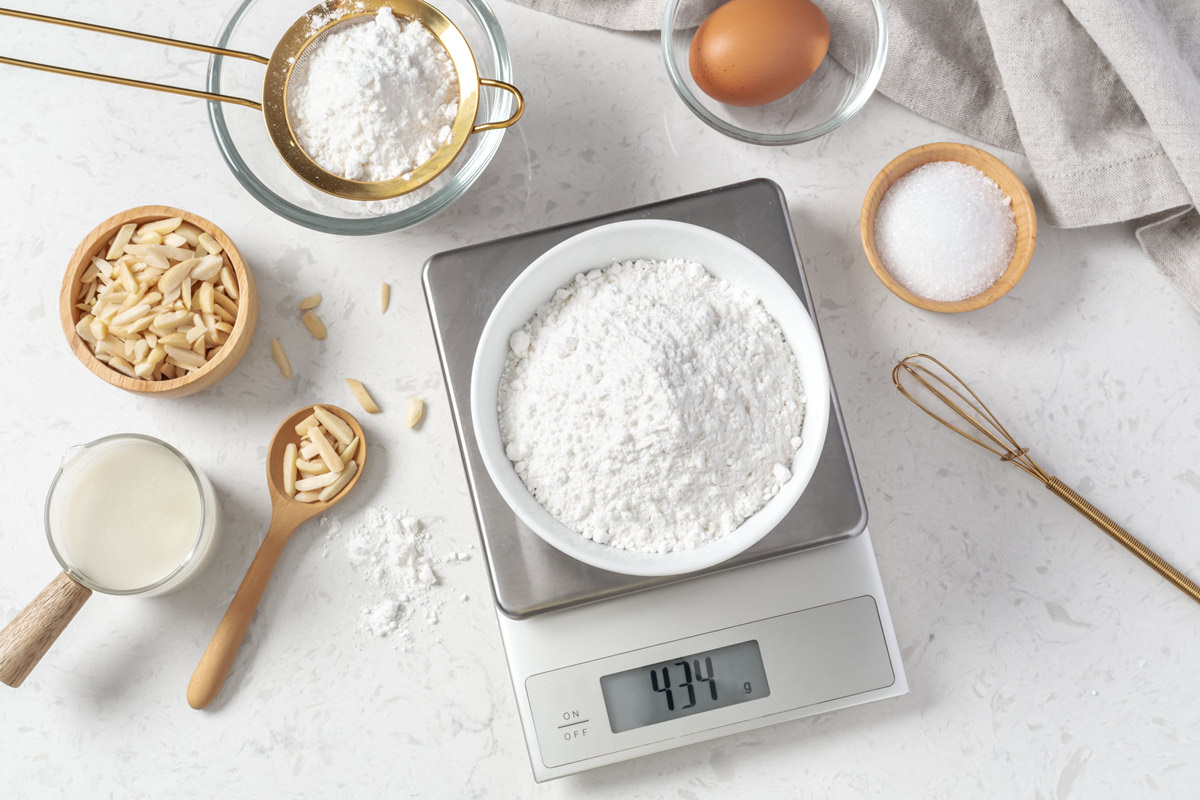Swedish Meatballs and Ultra Creamy Eggnog Recipes, Spotlight on Black Peppercorns and Cinnamon, Digital Scales for Precise Measuring, Soft Drinks and Stroke Risk, and Benefits of Yoga
Are you getting into the holiday mindset and wondering how to cook up delicious dishes without relying on the same old same old? I’ve got two recipes you’ll want to try ASAP: sensational Swedish meatballs and an ultra-creamy eggnog. The flavors of both recipes are turbo-charged with spices in the latest collection from the T. J. Robinson Curated Culinary Selections—two perennial favorites heirloom Vietnamese cinnamon and vine-ripened black peppercorns.
I was fascinated by the research I’m detailing on how certain beverages can increase the risk for stroke, considered a disease of the brain—plenty of food (make that drink) for thought! And if the excitement of the holidays causes added stress for you as it does for so many, consider yoga for your next me-time activity. If you’ve never tried it before, this gentle practice could be impactful in many ways.
Swedish Meatballs
 Swedish Meatballs
Swedish MeatballsA rich cream sauce, enhanced with freshly ground black peppercorns and nutmeg, defines the Swedish take on meatballs. Serve over noodles or mashed potatoes with a helping of lingonberry jam (whole cranberry sauce makes a tasty alternative). These meatballs also make a terrific passed hors d’oeuvre for holiday gatherings.
Ingredients
- 1 cup fresh breadcrumbs or panko
- 1/2 cup half-and-half
- 1 pound lean ground beef
- 1 pound ground pork
- 2 large eggs, slightly beaten
- 2 teaspoons garlic powder
- 1/2 teaspoon freshly groundnutmeg, plus more for serving
- 1/2 teaspoon ground allspice
- 1 small yellow onion, minced
- 1 teaspoon sea salt, plus more to taste
- 1/2 teaspoon freshly ground black pepper, plus more to taste
- 3 tablespoons extra virgin olive oil
- 3 tablespoons unsalted butter
- 1/4 cup all-purpose or white whole wheat flour
- 3 cups homemade or low-sodium store-bought beef stock
- 1/2 cup heavy cream
- Optional: 2 tablespoons freshly chopped flat-leaf parsley
Directions
Step 1
In a very large bowl, soak the breadcrumbs in the half-and-half. When the breadcrumbs have fully absorbed the liquid, add in the ground meats, eggs, garlic powder, nutmeg, allspice, onions, salt, and pepper. Use your hands to completely mix all the ingredients, then form 1-inch meatballs.
Step 2
Heat a large skillet over medium heat. When hot, add the olive oil and brown the meatballs on all sides (you may need to do this in batches to avoid cramming them). Transfer the meatballs to a clean dish. Add the butter to the skillet; when melted, sprinkle on the flour and whisk constantly until the roux browns, about 3 to 5 minutes. Whisk in the stock, about a cup at a time, bringing it back to a boil to thicken before adding the next cup. Stir in the heavy cream, then add back the meatballs. Simmer for 5 to 10 minutes, until an instant-read thermometer reaches 165°F in a few meatballs. Top with more nutmeg and, if desired, the parsley.
Yields 6 to 8 servings
Ultra Creamy Eggnog
 Ultra Creamy Eggnog
Ultra Creamy EggnogRich and creamy, fresh eggnog makes you feel like you’re sipping on vanilla custard—so good that you’ll never go back to the premade versions in the grocery dairy case. Spike it with your favorite spirit, such as brandy, bourbon, rum, or whisky, if desired.
Ingredients
- 2 large eggs plus 4 yolks
- 1/2 cup brown sugar
- 2 cups milk
- 1 cup heavy cream
- 1 teaspoon freshly ground nutmeg, plus more for sprinkling
- 1/2 teaspoon cinnamon, plus more for sprinkling
- 1 teaspoon vanilla
- Pinch of fine sea salt
Directions
Step 1
Whisk the eggs and yolks and sugar together in a medium bowl until well blended; set aside. In a saucepan over medium heat, slowly bring the milk and cream to a simmer. Ladle a small amount into the eggs to temper them, then slowly transfer the egg mixture back to the saucepan. Cook, whisking continuously, until it reaches 160°F on an instant read thermometer (the temperature it takes to “cook” the eggs); don’t let it reach a boil.
Step 2
Take the saucepan off the heat and stir in the nutmeg, cinnamon, vanilla, and salt. For the smoothest eggnog, strain it through a fine sieve into a heat-safe pitcher. When it comes to room temperature, cover and place in the fridge until cold and thickened (you can do this up to three days in advance).
Step 3
To serve, pour into festive glasses, sprinkle on more cinnamon, and grate more nutmeg right over the top.
Yields 4 drinks

Healthy Ingredient Spotlight
Black Peppercorns and Cinnamon
Once the most coveted spice in the world, peppercorns were the original “black gold.” Grown in bunches like tiny grapes, they are the seeds of a plant and are considered a fruit. Enjoy freshly ground black pepper on favorite foods like eggs, mashed potatoes, and tuna salad, but also have fun finding new ways to appreciate its flavor. It makes a perfect “crust” for steak, duck breast, and tuna, and enlivens roasted sweet potatoes and winter squashes, vegetable slaws, cold pasta salads, the Italian classic cacio e pepe, mulled wine, and wine-poached pears. Ancient Indian and Egyptian cultures used peppercorns as an anti-inflammatory, an analgesic, and even a preservative. Contemporary research has found that there’s science to back up those early practices, thanks to the enzymes in piperine.
Harvested for thousands of years, Vietnamese cinnamon is world renowned for its spicy sweetness. Reach for cinnamon to top your lattes and add sweet spice to smoothies and oatmeal. It will elevate fruit-based desserts, from a simple baked apple to wine-poached pears, as well as baked treats like all-American gingerbread cookies, spiced banana bread, a rich babka, and even richer baklava. It adds depth to both savory and sweet dishes, from dried-fruit-and-nut-laden Persian rice and Moroccan tagines to Mexican moles and churros to Vietnamese Pho to Greek moussaka. In ancient times, cinnamon was the go-to remedy for respiratory and digestive ills. We’re still learning about its benefits today. According to a review paper in Pharmacognosy Research, the phytochemicals in cinnamon could be good for brain health, boosting the brain’s ability to use glucose, the energy source that supplies every part of the body. They’re also being studied to help lower blood pressure, manage diabetes, and boost heart health, along with fighting off cell damage caused by toxins in our environment.

Quick Kitchen Nugget
A More Precise Measure

While measuring spoons are the tried-and-true way most people measure quantities, you might find more and more references to gram weights for ingredients in recipes. That’s because an ingredient’s weight is more precise, especially when you are measuring whole spices that don’t fit perfectly in a spoon. An electronic scale with a bright digital readout will be a great addition to your kitchen gadgets.

For Your Best Health
New Concerns Over Popular Soft Drinks
It’s no secret that drinking sugar-sweetened soda does nothing to boost health, but recent findings from the INTERSTROKE research project have expanded the list of concerns linked to these and other beverages with regard to stroke. Stroke occurs when the blood supply to part of the brain is cut off, damaging brain cells. Ischemic stroke, the predominant type, is when a blood vessel in the brain is blocked by a clot or plaque; hemorrhagic stroke is when a blood vessel in the brain breaks and bleeds into surrounding tissue.
INTERSTROKE is one of the largest international studies of risk factors for stroke. It includes almost 27,000 people, nearly half of whom experienced a first stroke; they come from 27 countries across North and South America, Africa, Europe, the Middle East, and Asia and represent a broad range of ethnic as well as geographical backgrounds and different cardiovascular risk profiles.
Scientists from the University of Galway in Ireland, in collaboration with McMaster University in Canada and an international network of stroke researchers, conducted two analyses of INTERSTROKE data and published their findings on the effects of carbonated drinks, fruit juice/drinks, and water in the Journal of Strokeand those related to tea and coffee in the International Journal of Stroke.
The study that focused on carbonated drinks and fruit juice found:
- Both sugar-sweetened and artificially sweetened (“diet” or “zero sugar” versions) carbonated or fizzy drinks were linked with a 22% increased chance of stroke, and the risk increased sharply with two or more of these drinks a day. This link was greatest among people in Eastern/Central Europe, the Middle East, Africa, and South America.
- Fruit juice drinks were correlated with a 37% increase in the chance of hemorrhagic stroke. With two of these drinks a day, the risk triples. Women were at a higher risk than men.
- Drinking more than 7 cups of water a day was linked with reduced odds of an ischemic stroke.
“Not all fruit drinks are created equal: Freshly squeezed fruit juices are most likely to bring benefits, but fruit drinks made from concentrates, with lots of added sugars and preservatives, may be harmful,” explained lead researcher on both studies Professor Andrew Smyth, MSc, PhD, professor of clinical epidemiology at University of Galway and consultant physician at Galway University Hospitals. The team noted that many products marketed as fruit juice are made from concentrates and contain added sugars and preservatives, which may offset the benefits usually linked with fresh fruit and actually increase stroke risk. “Our research also shows that the chance of stroke increases the more often someone consumes fizzy drinks,” he added. “As a doctor and as someone who has researched the risk of stroke, we would encourage people to avoid or minimize their consumption of fizzy and fruit drinks and to consider switching to water instead.”
The study that focused on the consumption of coffee and tea found:
- Drinking more than four cups of coffee a day increased the chance of stroke by 37% but was not associated with stroke risk at lower intakes.
- Drinking tea was linked with an 18%-20% reduced chance of stroke.
- Drinking 3-4 cups per day of black tea, including Breakfast and Earl Grey teas, was linked with a 29% lower chance of stroke, while drinking 3-4 cups per day of green tea was linked with a 27% lower chance.
- Adding milk may reduce or block the beneficial effects of antioxidants that can be found in tea: The reduced chance of stroke from drinking tea was lost for those who added milk.
“A key goal of the INTERSTROKE study is to provide usable information on how to reduce one’s risk of stroke. While hypertension is the most important risk factor, stroke risk can also be lowered through healthy lifestyle choices in diet and physical activity. The current study adds further information on what constitutes healthy choices on daily intake of beverages,” said Professor Martin O’Donnell, MB, PhD, executive dean of College of Medicine, Nursing and Health Sciences at University of Galway, consultant stroke physician at Galway University Hospitals, and co-leader of the INTERSTROKE study in partnership with Professor Salim Yusuf of McMaster University, Canada.

Fitness Flash
Do You Do Yoga?
With all of yoga’s benefits, it’s surprising that only about 15% of Americans take advantage of this mind-body practice. Far from the touchy-feely stereotype of twisting into a pretzel while chanting, there are many ways to tap into its many benefits.
It’s true that yoga began as a spiritual practice rooted in Indian philosophy thousands of years ago. Contemporary variations often focus more on its physical and mental well-being aspects. Through gentle yoga poses, breathing, and meditation, it’s possible to increase strength and flexibility while easing stress. There are also more challenging forms of yoga, such as hot yoga, that offer intense workouts (though these are not for everyone, especially if you’re pregnant).
According to NIH’s National Center for Complementary and Integrative Health (NCCIH), yoga has overall benefits like improved sleep and a better emotional outlook and may also play a positive role in managing specific health conditions, like neck, low back, and knee pain; headaches; symptoms of anxiety and depression; and even quitting smoking and losing weight.
While yoga is considered a safe form of exercise, the way to get the most from it and avoid injury is to learn it from a credentialed teacher and, if you have any health conditions, one who has expertise adjusting yoga to your specific health needs. The NCCIH suggests asking about the training and experience of the yoga instructor you’re considering, as well as talking with your healthcare provider and the yoga instructor in advance to go over any poses and practices that you may need to avoid or modify. There are many poses for beginners, and many to learn as you progress.
Get More Recipes In Your Inbox!













